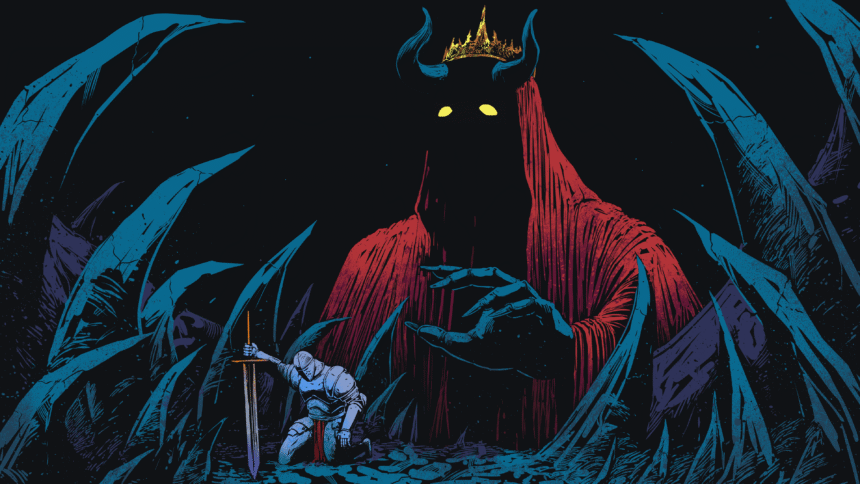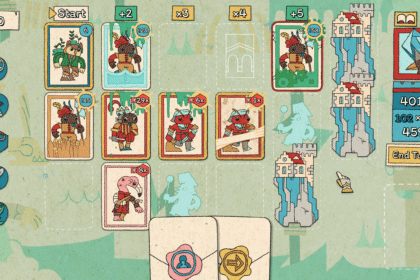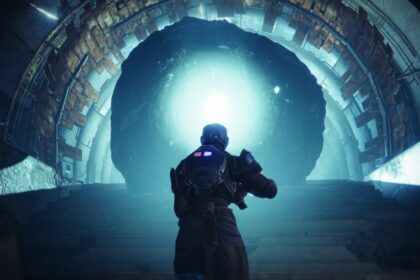If you took a sprawling, 100 hour, turn-based RPG and put it in a car crusher, the dense little cube that spat out the other end would probably be a bit like He Is Coming.
This Early Access roguelike auto-battler is an exercise in absolute videogame minimalism. You move around a large fantasy world battling monsters, finding loot, talking to NPCs, and taking on increasingly difficult bosses, until you save the world. But you don’t choose your moves in those fights, nor do you level up or pick your stats. There’s almost no story, the NPCs only speak to offer services or wares, and time passes in the blink of an eye as the game counts down to the emergence of each new boss.
Adventures are often over in five minutes—even your most successful probably won’t last longer than 10.
So what choices are you actually making in that short time? The strategy of He Is Coming essentially boils down to building your inventory of equipment. Everything you do in the world, you do with the goal of equipping a killer selection of items, with those being what dictates how your character fights. You can’t even hold a lot of them—you have just four slots at first, gaining two each time you beat a boss, and ultimately taking eight into the third and final battle.
They’re not complex items—most of them just have one, simple effect, with usually less than a line of description. There’s no juggling of a +5% crit bonus here and a +2% block chance there. That makes choices quick—but not necessarily easy.

When I first started playing He Is Coming, I thought there wasn’t enough to it. It felt like I was just a victim of random chance as I walked around the map, grabbing whatever items looked good and then usually dying to the second boss. Runs seemed too fleeting to be interesting.
But something kept drawing me back, and the more I banged my head against it, the more I realised there was more going on in He Is Coming than I was giving it credit for.
Simply wandering the map opening treasure chests isn’t enough—you need to maximise every minute to wring the most out of this pixel art world. Learning how the map works and how to traverse it efficiently is key. Soon I was beelining towards fast travel points, hunting down crystal balls that reveal the locations of key sites, and finding ways to avoid wasting precious time resting.
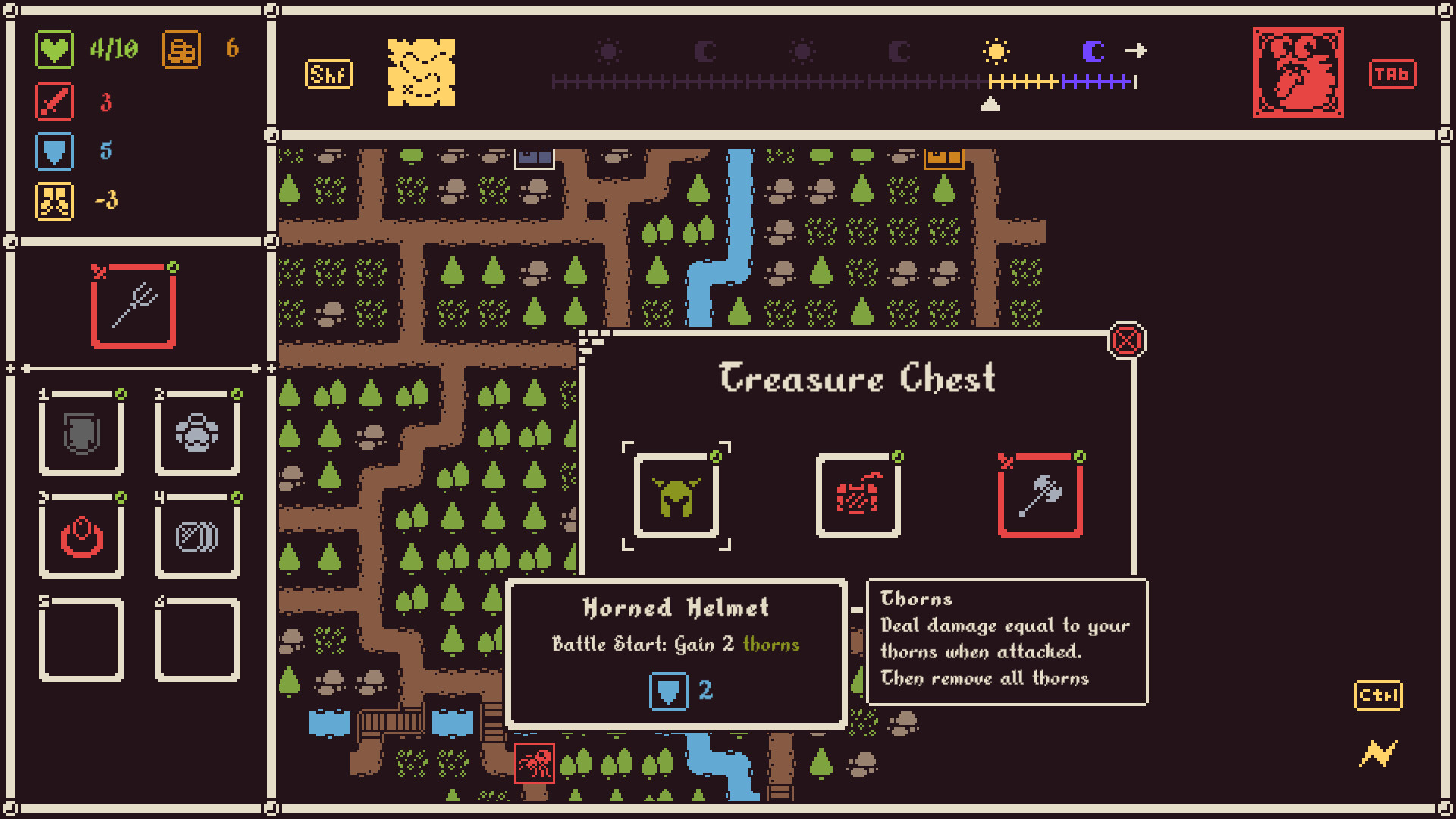
Items are simple, but once you start focusing on the possible synergies between them, the results can be surprising. The common items found in chests often provide the raw power and stats you need, but the next step is finding the graves, merchants, and other hidden-away sources of rare and heroic items. These often provide the crucial effect that turns a basic set of bonuses into an engine of destruction.
A breastplate that improves your armour stat is a useful boost to your survivability, but not much beyond that. But if you then find a rare time bomb, which increases in potential damage each turn but explodes when your armour runs out… Suddenly you could be working towards a build based around delaying that moment as long as possible, stacking different armour effects together discarding usual standbys like healing and attack bonuses.
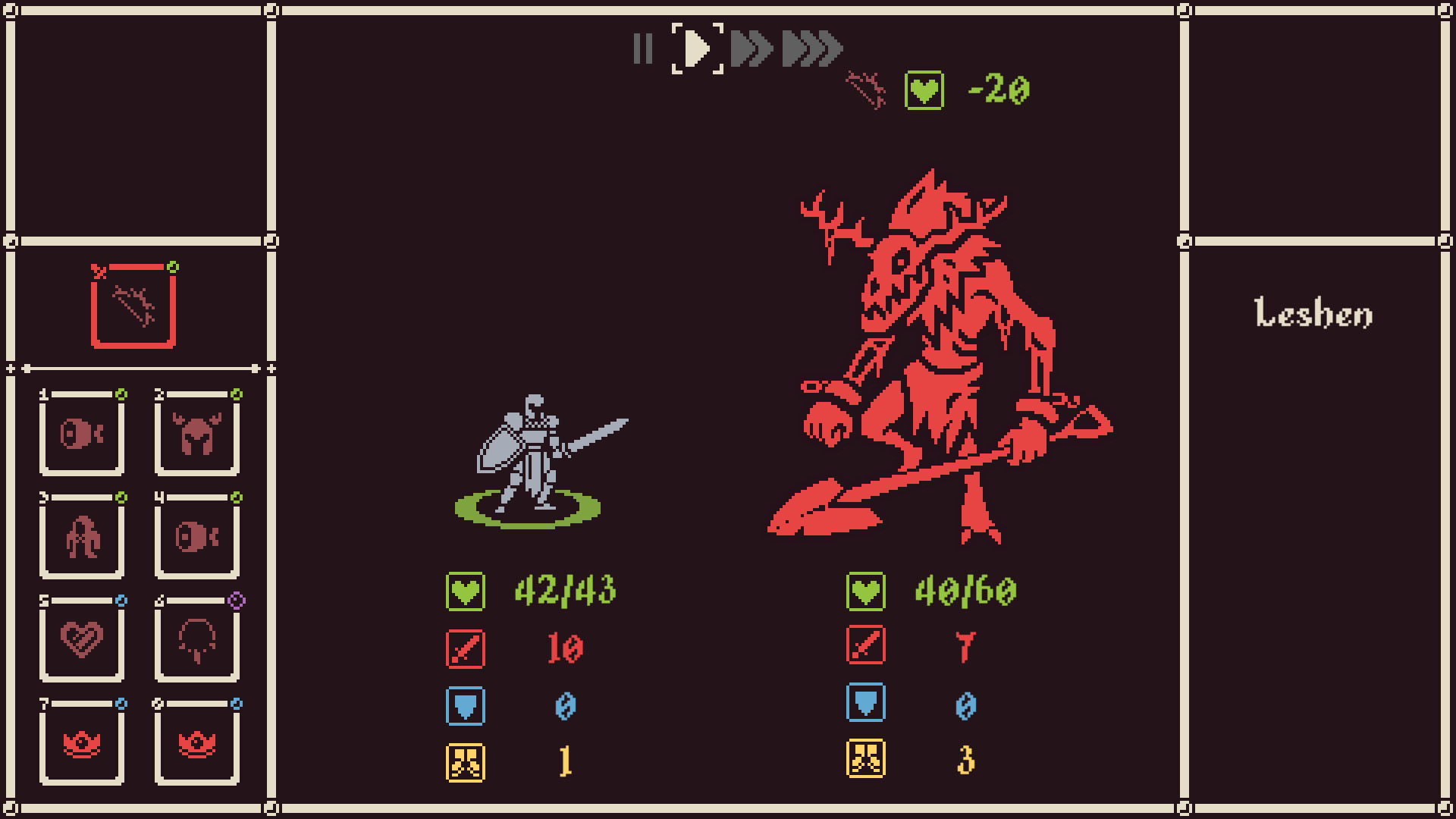
If you can then get a sword talisman, which increases all damage that isn’t the usual hitting-people-with-a-sword variety, you could head in the direction of stacking different bombs for mega-explosions. But hold on, maybe you’d be better off heading in the direction of thorns—dealing damage to the enemy every time they strike you, with that talisman bonus on top, and stacking survivability combos to keep that armour wall up while they kill themselves.
This isn’t ground-breaking stuff for the roguelike genre, admittedly—but it’s cramming that usual rollercoaster ride of scrambling for a build into a few minutes rather than an hour, and there’s definitely something compelling about that.
For me, it’s become a bit like picking at a bowl of popcorn instead of sitting down for a full meal—I can just crunch down a quick run here and there between other things, slowly building up more and more strategic knowledge, and never having to waste more than a snippet of my time when a run doesn’t quite come together. Before I even realised it, my quick five minute runs had added up to 12 hours of play time.

But that feeling that luck has to be on your side never quite goes away, and even as quick as runs are, they can still feel frustrating when the chests just aren’t giving you anything you need. As you progress, you unlock new items, which is great for variety, but also dilutes the loot pool, often with very specific pieces—that only makes the problem worse.
This is an Early Access release, however, and the devs are planning to tinker and implement player feedback for a full year ahead, so there’s plenty of time for the rough corners of this dense cube to be sanded down. In the meantime, I think He Is Coming is already an interesting, bite-sized palate cleanser for roguelike obsessives—and it’s got an agreeably small price to match.
Read the full article here



